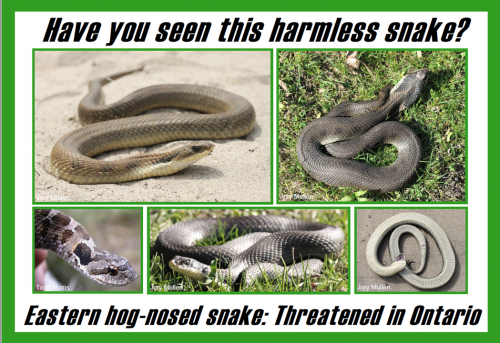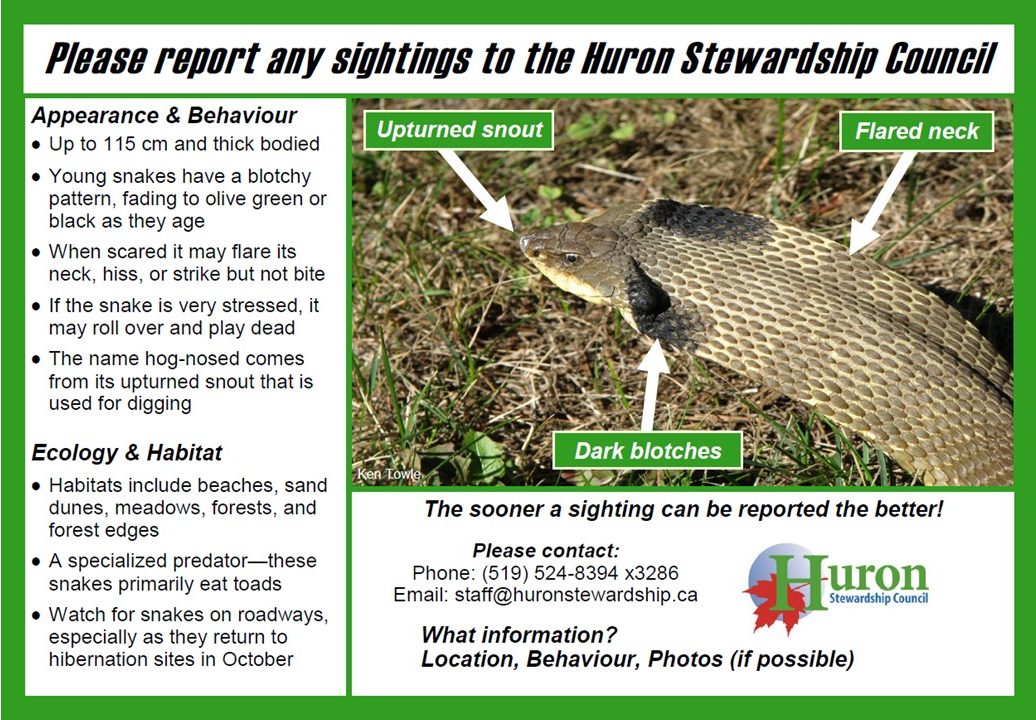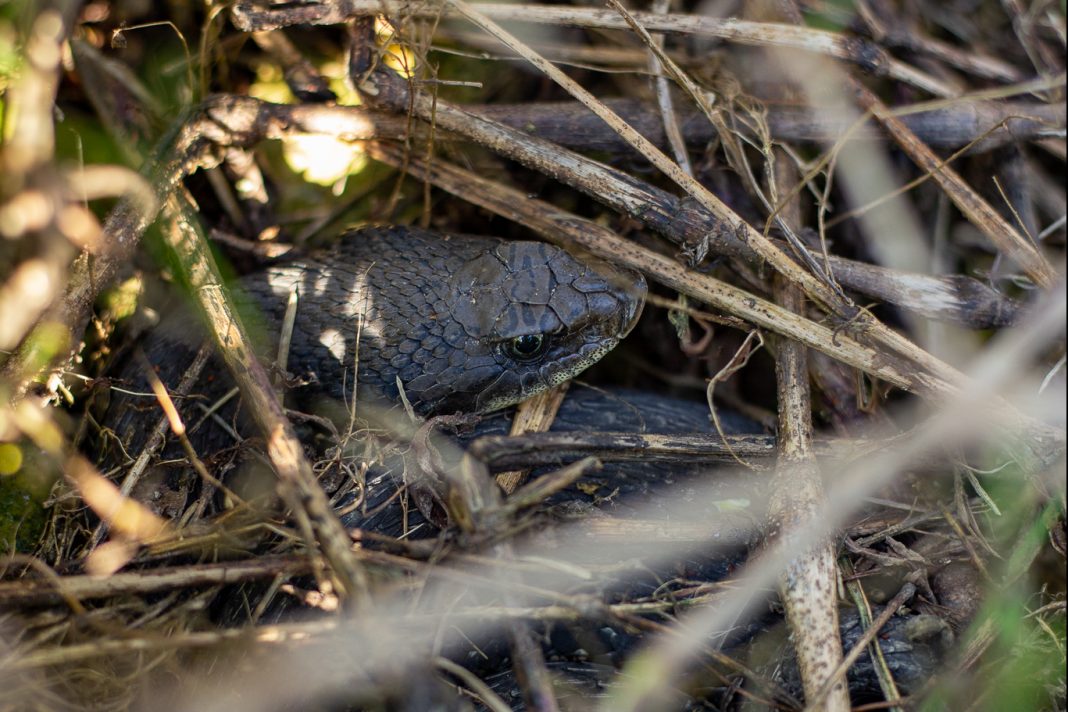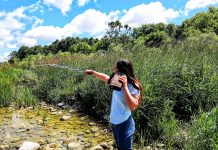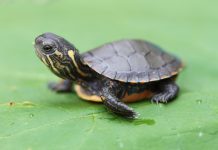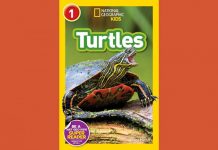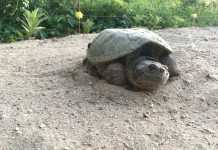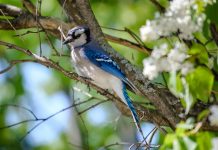Written by: Allie Gallon, MSc. Candidate, Photo by: Katie Wintersgill
As I sit here sheltered from the scorching sun beneath a lush canopy of oak, ash, and maple, I can’t help but feel immense gratitude for opportunities that studying eastern hog-nosed snakes (Heterodon platirhinos) in Huron County has given me.
Hog-nosed snakes, what? Here? In Huron County?! You bet! The population, found north of Goderich, was reported in 2011 and until a few years ago had never been studied! It was the Huron Stewardship Council (HSC) who endeavoured on a research partnership with Laurentian University (LU) to study the Huron Co. population. I was the lucky individual chosen for the project to fulfill a Master of Science Degree but knew it wouldn’t be an easy feat as eastern hog-nosed snakes (or ‘hoggies’ as I call them) are infamously hard to find!
Eastern hog-nosed snakes are non-venomous snakes, appropriately named ‘hog-nose’ for an up-turned nose they use for shovelling through sandy soils for nesting and over-wintering activities. In Canada they are only found here in Ontario and are listed as a species at risk.
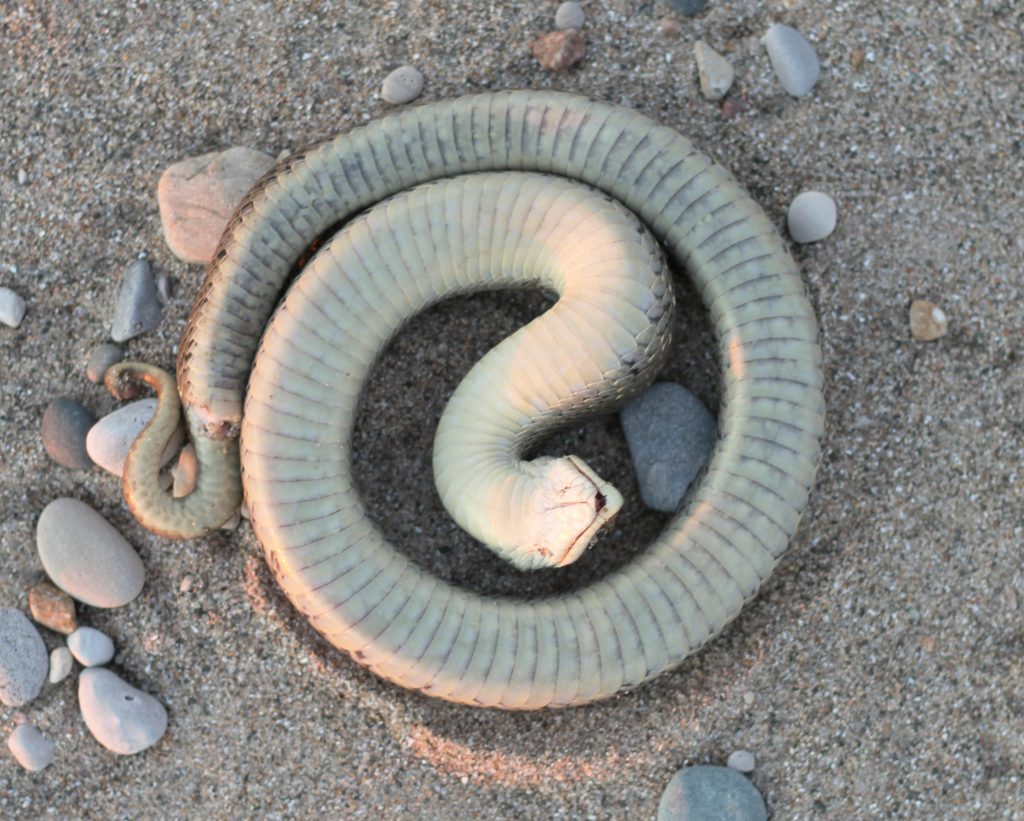
You may have heard of them in the news, on social media, or by word of mouth—’Canadian’ or ‘zombie snakes’. Hoggies are neither, just really good actors, giving award-worthy performances! When feeling scared or threatened they will display cobra mimicry by raising their head, flattening their neck, and hissing like a cobra, or will even flip over and play dead! It is important to note when displaying these behaviours, the snakes are scared! Snakes are more scared of you than we have to be of them, we are just big giants that they want nothing to do with! Like any other snake, these individuals will ALWAYS try and give as much of a warning to notify you of: “Oh hey, I’m here!” or “Hmm, you’re a little too close for comfort.” Snakes are never intentionally “out to get humans”; they are like us: living beings just trying to live out their lives!
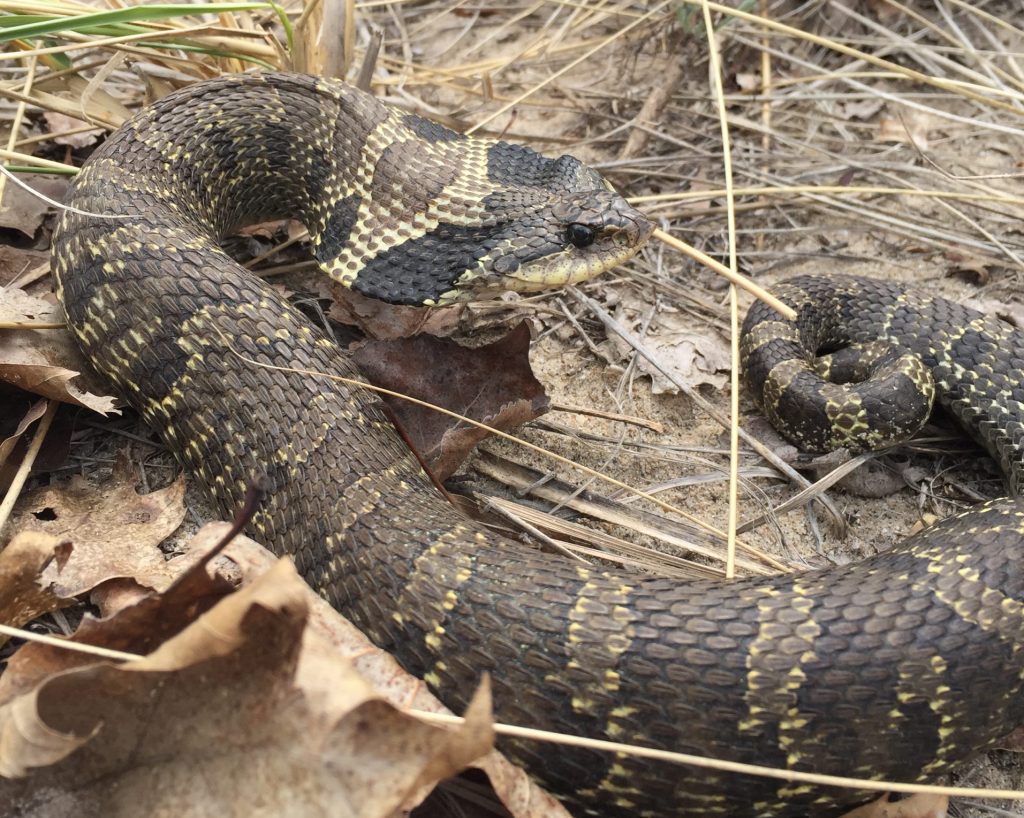
You may have seen me over the years, the strange girl walking around with a big antenna along the trails, the beach, or out in fields… So, what exactly am I doing and studying about these snakes? To try and conserve this population, understanding snake space use (eg. movement, home range size, preferred habitat), features influential to basking, and potential threats to survival of these snakes are very important. To do this, I use the antenna to track locations of snakes implanted with radio transmitters. I later revisit the observation location to conduct a habitat survey, recording information about vegetation surrounding the area, to see if there are specific features hoggies in Huron Co. prefer to use! Since 2017, we have observed a total of 31 different hog-nosed individuals in Huron Co! (I wasn’t exaggerating about them being difficult to find!) We have observed generations of snakes being produced as well, although not without obstacles for egg and hatchling survival along the way: nest predation, competition between nesting females, to being run over by vehicles.
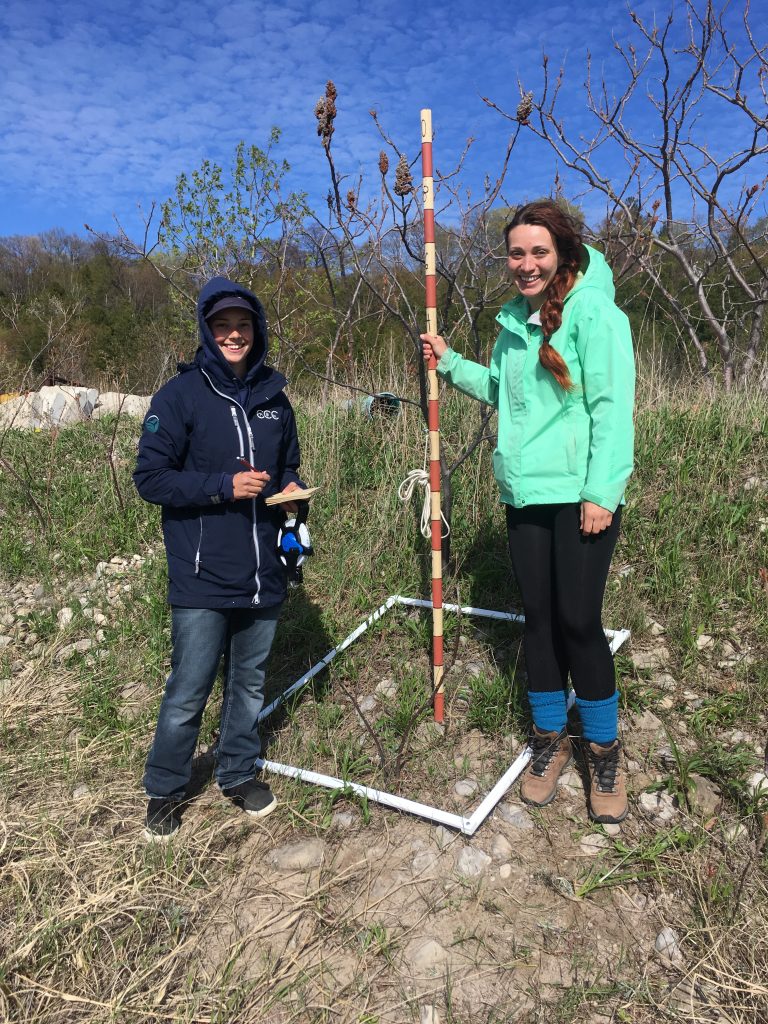
These snakes will travel all over to use various habitats available in Huron Co., some snakes even travelling over a kilometer in less than 3 days! Preferred habitat appears to vary, with some snakes sticking to the forested trails, some preferring the beach and bluffs, and some have even crossing water to use riverbank features! I still have to crunch some numbers and run some statistical analysis with the data I’ve collected this year, but it will be interesting to find out what other things are important for hoggies in Huron Co.!
Although this is my final year here in Huron County, the HSC will continue researching and searching for eastern hog-nosed snakes! The incredibly secretive nature of these snakes requires the help of a lot of people to successfully study them, so your help would be greatly appreciated! If you see any eastern hog-nosed snakes please report your sightings to: our email huronstewardship@gmail.com, our Facebook page, or give us a ring at 519-524-8394. Information to report with your sighting should include the: date/time, location coordinates, and a photo of the snake (if possible).
With the help of many landowners, trail-users, volunteers, and beachgoers, there has been some incredible findings gathered about these snakes and this project would not be as successful as it has been without so much help! Therefore, I owe a HUGE thanks to all in the community that have helped support research on eastern hog-nosed snakes in Huron County!
Cheers,
Allie
